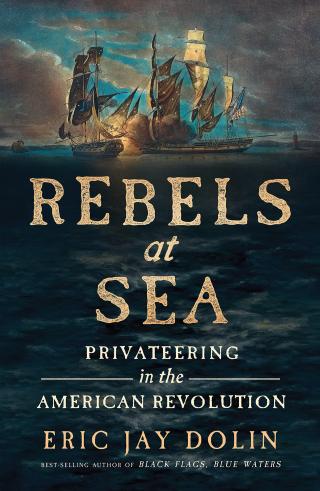Mao’s Army Goes to Sea: The Island Campaigns and the Founding of China’s Navy
Toshi Yoshihara. Washington, DC: Georgetown University Press, 2022. 173 pp. Maps. Biblio. Index. $34.95.
Reviewed by Captain Walker D. Mills, U.S. Marine Corps
In his new book, Mao’s Army Goes to Sea: The Island Campaigns and the Founding of China’s Navy, Toshi Yoshihara presents an exceptional account of the critical first 18 months of the People’s Liberation Army Navy (PLAN). In a relatively short period during the Chinese Civil War, Chinese leaders created a navy capable of launching complex amphibious operations and successfully wielded it against Nationalist forces. Yoshihara’s account of this period is built on extensive research and newly accessible Chinese archives, which makes it a major contribution to English-language literature on the early PLAN.
Yoshihara’s illumination of the PLAN’s founding is an excellent case study in establishing new organizations. Early PLAN leaders, with no maritime experience, were tasked with creating a navy in the middle of the Chinese Civil War, out of thin air. Initially, more than half of the PLAN’s manning was drawn directly from the PLA, even though most had no maritime or naval experience. At the same time, many of the key roles in the new navy were filled with Nationalist defectors who had received naval training in the United Kingdom or the United States during World War II. Communist leaders put a premium on recruiting former Nationalist naval officers to staff the PLAN and even went so far as to entice them with higher pay and bonuses. However, PLAN leaders tried to balance the potential unreliability of former Nationalist officers and naval officers from more bourgeois backgrounds by mixing in more ideologically pure officers from the PLA. Thousands of Soviet advisors also were instrumental in building the PLAN.
Yoshihara also discusses the doctrinal foundations of the PLAN. From its creation, the navy was envisioned as more of a coastal defense force that could rely on the Chinese mainland as an aircraft carrier and where shore batteries were “akin to a warship’s main guns.” As early as 1950, the PLAN made a deliberate choice to focus on naval aviation, submarines, and fast-attack craft, while delaying an interest in larger surface combatants. The balance toward being a coastal defense or sea-denial navy remained until the current era.
Another highlight is Chapter Six, which details the Communists’ seizure of Hainan Island in 1950, still the largest amphibious operation Chinese history. Hainan Island is similar in size to Taiwan, and the amphibious campaign against it was by far the largest and most complex of the period.
The biggest drawback of the book is that at only 173 pages with notes, it leaves the reader wanting more. Thankfully, a reader interested in the contemporary PLAN can turn to Yoshihara’s excellent book Red Star over the Pacific (Naval Institute Press, 2019). Also, without more detailed maps, it can be difficult to understand the chronology of the early amphibious campaigns—at both the tactical and strategic levels—especially for readers unfamiliar with Chinese geography.
Mao’s Army Goes to Sea is a must-read for anyone interested in the history of China’s navy or amphibious operations generally. The most valuable part of Yoshihara’s work is that he explains why this 18-month period is still relevant for military members and policy-makers today. One major conclusion is that the PLAN views merchant and commercial shipping as a wholly legitimate and effective way to transport amphibious forces to their objectives. During the Island Campaigns many made do with rowboats, small sailboats, or, in one case, simply walking battalions through chest-deep water across a narrow channel at low tide. Recent research suggesting the PLAN is ready to use commercial ferries to move armored vehicles in an amphibious operation reinforces the validity of this takeaway. And much of how the PLAN thinks about how it would conduct an amphibious operation against Taiwan is informed by its experiences in its early campaigns against Nationalist-held islands. Ultimately, the value of Yoshihara’s work is that he has both uncovered the history and explained why it matters in an accessible volume.
Capt Mills is a Marine infantry officer and nonresident fellow with the Brute Krulak Center for Innovation and Future War.
When the Shooting Stopped: August 1945
Barrett Tillman. Oxford, UK: Osprey Publishing, 2022. 304 pp. Endnotes. Biblio. Index. $35.
Reviewed by Commander Ian Starr, U.S. Coast Guard
I have consumed World War II literature voraciously over the years, feeding an interest in that period of human history that was instilled in me by my father at a young age. Some of that consumption came through professional means, such as through classes at the Naval War College, but much of it simply came from scouring the shelves of bookstores and libraries for anything that caught my eye. But much of my reading (and, indeed, much of the available literature) covers events that started on 1 September 1939 and ended on or about 10 August 1945. When the Shooting Stopped was something new for me—a detailed look at the war’s end and what happened after the guns stopped blazing.
Barrett Tillman’s passion as both an aviator and naval aviation historian is on full display in his most recent book, and many of his vignettes focus on the sky—B-29 raids, kamikaze attacks, and frenetic dogfights as World War II entered its last days. But underpinning everything is the grim specter of Operation Downfall, the Allied plan for invasion of the Japanese homeland. Anticipating hundreds of thousands of casualties in the largest maritime invasion in history, the U.S. War Department preordered some 370,000 Purple Hearts, a supply that, according to the book, lasted through the Vietnam War.
Following Japan’s surrender after the nuclear bombings of two of its cities, the relief is palpable, and, as Tillman notes, “It was enough to be young and alive and to have a future on the day the shooting stopped.” But, in some ways, the work was just beginning. The Allies’ triumphant entry into Tokyo Bay in late August 1945 was preceded by several aerial skirmishes and naval engagements by piecemeal Japanese forces reluctant to give up the fight.
Tillman deftly weaves between the high-level strategic and political forces at play and the deeply personal vignettes of individuals caught up in historical moments. He hits a lot of the familiar beats: the loss of the cruiser USS Indianapolis (CA-35), the nuclear strikes against Hiroshima and Nagasaki, the abysmal treatment of prisoners of war by the Japanese, and the giddy excitement of V-J Day. But Tillman also treads less familiar terrain, such as the Soviet Union’s masterful invasion of Manchuria in early August 1945 and that operation’s key role in the Japanese decision to surrender unconditionally.
When the Shooting Stopped excels as an impartial analysis of the players and events that shaped the late-war and postwar era. Tillman provides a dispassionate look at the decision-making of Stalin, Hirohito, Roosevelt, Churchill, and others. There are no madmen or heroes in this telling, just leaders making choices and dealing with the consequences of those choices. At the end, he succinctly summarizes what became of many of the war’s major players and decision-makers. The book is a worthy addition to Tillman’s significant body of World War II works and provides a helpful look at the forces that brought Japanese signatories onto the deck of the mighty Missouri (BB-63). Students of history may focus on the grand battles fought across the breadth of the Pacific, but the events of August 1945 were just as instrumental and worthy of consideration.
CDR Starr is currently serving as a liaison at the Department of State’s Bureau of International Narcotics and Law Enforcement Affairs. He is a career cutterman who most recently served as executive officer of the USCGC Alex Haley (WMEC-39) in Kodiak, Alaska.
Rebels at Sea: Privateering in the American Revolution
Eric J. Dolin. New York: Liveright Publishing Corp., 2022. 302 pp. Illus. Notes. Biblio. Index. $32.50.
Reviewed by Captain Andrew C. A. Jampoler, U.S. Navy (Retired)
With this insightful telling of the American Revolution at sea and the decisive role of privateers in the very improbable victory over the British Empire, Eric Jay Dolin (a prolific PhD from MIT) caps more than three decades as a best-selling author of maritime history and other subjects. His impressive, and often award-winning, body of work has included histories of hurricanes, piracy, American lighthouses, Sino-American trade, whaling, and the fur trade, as well as, oddly, one on sewage management and the pollution and cleanup of Boston Harbor.
There were tens of thousands of American privateers sailing in more than a thousand government-licensed raiders, seizing British ships and their cargoes and capturing their crews. These efforts contributed to America’s victory against Europe’s principal military and naval power—a contribution that, by most measures, exceeded that of the infant U.S. Navy.
Dolin makes the case that it was American privateers who took the fight on water to the British. (That being done at no expense charged to the hard-pressed budgets of the fractious, revolting colonial governments.) Ironically, in so doing, Massachusetts in November 1775, then New Hampshire and Rhode Island, and soon the other colonies were following a decades-old example of the mother country. British privateers had sailed against the French throughout their conflicts during the earlier years of the 18th century.
First, a definition to distinguish privateers from pirates: “Privateers,” Dolin explains, “were armed vessels owned and outfitted by private individuals who had government permission to capture enemy ships in times of war.” After 23 March 1776, this permission had the sanction of the Continental Congress. Ten days later, Congress issued a page of “Instructions to the Commanders of Private Ships or Vessels of War, which shall have Commissions or Letters of Marque or Reprisal authorizing them to make Captures of British Vessels and Cargoes,” and the war at sea was truly under way.
Dolin’s five subsequent chapters describe the Revolutionary War at sea and its politics ashore. He looks successively at the logistics and mechanics of obtaining and arming a ship, recruiting a crew, and putting a privateer to sea; at the essential “French Connection,” and the much more marginal roles of the Dutch, Spanish, and Danes in the Colonies’ war against the British economy; at representative war patrols and individual battles; and finally, superficially, at privateers in the War of 1812 and the Civil War.
Dolin is an inspired historian, a careful and creative storyteller. I enthusiastically recommend this well-researched, handsomely illustrated, and engagingly written examination of the essential contribution of American privateers to the Revolutionary War.
CAPT Jampoler is the author of seven Naval Institute Press books, beginning with his first, the award-winning Adak: The Rescue of Alfa Foxtrot 586. His most recent book, Hard Aground: The Wreck of the USS Tennessee and the Rise of the U.S. Navy, was published by the University of Alabama Press in February 2023.










